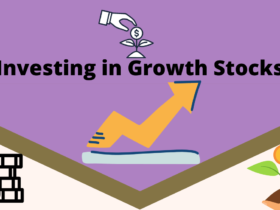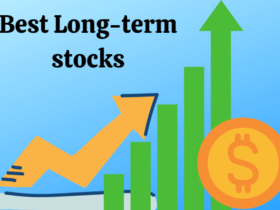A company’s market capital (cap) can be found by multiplying its share price by the number of outstanding shares it has. For example, if the share price of the company ABC is $ 50, and it is not 1 million outstanding shares. Its market cap will be $ 50 million. Large-cap stocks or Real Estate Stocks are a company with a market cap of more than $ 10 billion.2 These are well-known, well-established companies, and some are worth more than the economic output of many small countries Huh.
Large-cap investing is less risky than small-cap investing, yet you should do thorough research before purchasing any stock. Consider the use of mutual funds, which allow you to invest in several large-cap companies at once. You should always do some research, but the diversification that mutual funds provide reduces your risk and eliminates the task of having to build a portfolio to do individual stock research.
Read Also- Top 5 Stock Exchanges In India
What Does Large Cap (Big Cap) Mean?
Large-cap (also sometimes referred to as “Big Cap”) refers to a company which has a market capitalization value of more than $ 10 billion. A smaller version of the large-cap term “large market capitalization.” Market capitalization per share is multiplied by the number of outstanding shares of a company by its share price. A company’s stock usually are classified as large-cap, mid-cap or small-cap.
The following table demonstrates the classification.
| Small-cap companies | Mid-cap companies | Large-cap companies |
|---|---|---|
| Below Rs. 5,000 Crore | Within Rs. 5,000 – 20,000 Crore | Above Rs. 20,000 Crore |
Features of Large Cap Stocks
Some of the features of large-cap stocks are discussed below –
- Moderate-returns: Large cap companies are well established and have achieved financial maturity. Therefore, the value of their shares may not appreciate as much as the values of mid-cap and small-cap stocks. The returns on such shares have mainly come from the dividend component.
- Low-risk: A strong financial infrastructure for large-cap companies, patience, and strength. Ergo, large cap stocks are a mild reaction to market volatility. It is also important because, unlike the mid-cap and small-cap companies, they can not run the risk of disruption during the contraction of the market, and can still afford to continue to operate its business, such as investment Lowers the risk.
- Rich history: Companies have been in business for the long-term large-cap stocks list. They have a rich history operating officer accessible to the general public through various means, expressed such confidence. It can be used by potential investors for analysis.
- Expensive: These stocks are, in most cases, more expensive than other investment options.
- Liquid: Because they are the most liquid investment option in their widespread popularity and market buyers readily available.
Reasons to Invest in Large-Cap Stocks
One of the main reasons investing in large cap stocks is their size makes them less likely to go out of business, so they are likely to be a safer investment than small-cap companies. Investors typically flock to large cap companies during a contraction in the business cycle. This is why it does not mean that they are immune to recession; This just means they are more likely to face a recession without going out of business altogether.
The downside is because it is difficult to develop quickly when you already have the market leadership. Their share prices may not grow as fast as small companies, and most of these companies are unable to grow their industries. Are at the top. However, they pay dividends to compensate investors for a stable price. Most small companies will not pay dividends outside, as they need to reinvest profits for continued growth.
Dividend Payout conservative investors and the investment of those who have passive income connects it to another income stream, and are designed for reasonably reliable. They are also low-income when bond yields, which occurs when the government is a useful source of trying to stimulate the economy.
Large-Cap vs. Small-Cap
Large cap stocks outperform the market in the years following the expansion phase of the business cycle when the economy is growing briskly. The main reason is that individual investors have gained enough confidence to buy stocks, and they favor the big cap companies with the brand name deeming them. On the other hand, small-cap stocks — which companies with a cap between $ 300 million and $ 2 — outperformed the market in the early years of recovery.
The simple organizational structure of small companies allows them to make decisions faster, and they can change direction in no time to take advantage of changes in the economy. Small-cap growth tends to occur as the business cycle moves into the contraction phase, which is when small-cap companies are more likely to go out of business because they do not have the resources and cash reserves to maintain during an unprofitable recession. She goes.
Investing in Large Cap Stocks
Investors like to diversify their portfolios by investing in companies in different industries with varying market caps, revenues and earnings growth projections. Due to their size, large cap stocks are generally believed to be safer. While they do not offer the same growth opportunities as emerging mid cap and small cap companies, large cap companies are innovative market leaders and their stock price can gain significantly through specific market initiatives or around groundbreaking market solutions.
Generally, large-cap companies are usually due to an investment in their stability and dividend portfolio as the core long-term investment. Financial advisors suggest diversifying an investment portfolio by including small cap, mid cap, and large cap stocks. Allocation and investment decisions are typically based on risk tolerance and investment horizons.
Drawbacks of Large-Cap Stocks?
- Low capital appreciation: The major drawbacks of large-cap stocks are its limited ability to raise capital. The market fluctuates due to its mild response, share prices are fast in mid-cap and not as high in small-cap stocks during the market.
- Expensive: Investment in large-cap stocks in India requires substantial capital; This can not afford to invest in shares of persons with less disposable income.
- Rare: Currently, only a handful of large cap companies exist in India following the recent SEBI classification.
Blue-Chip Stocks:-
Many large cap companies are also well-known companies with a history of blue-chip stocks, growth and continuous dividend payouts.6 are the cream of the crop. They represent boasting a long history of paying small debts dividends, stable income, but most importantly, they diversified businesses which makes them vulnerable to changes in the short market.









